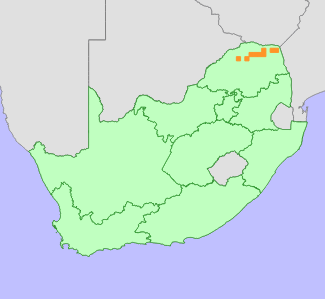Glen, H.F. and Hardy, D.S. 2000. Aloaceae (First part): Aloe. In: G. Germishuizen (ed). Flora of Southern Africa 5 Part 1, Fascicle 1:1-159. National Botanical Institute, Pretoria.
Hahn, N. 2002. Endemic flora of the Soutpansberg. Unpublished MSc, Univeristy of Natal, Pietermaritzburg.
Hall, A.V., De Winter, M., De Winter, B. and Van Oosterhout, S.A.M. 1980. Threatened plants of southern Africa. South African National Scienctific Programmes Report 45. CSIR, Pretoria.
Hilton-Taylor, C. 1996. Red data list of southern African plants. Strelitzia 4. South African National Botanical Institute, Pretoria.
Raimondo, D., von Staden, L., Foden, W., Victor, J.E., Helme, N.A., Turner, R.C., Kamundi, D.A. and Manyama, P.A. 2009. Red List of South African Plants. Strelitzia 25. South African National Biodiversity Institute, Pretoria.
Reynolds, G.W. 1969. The Aloes of South Africa. A.A. Balkema, Cape Town.
Smith, G.F., Steyn, E.M.A., Victor, J.E., Crouch, N.R., Golding, J.S. and Hilton-Taylor, C. 2000. Aloaceae: The conservation status of Aloe in South Africa: an updated synopsis. Bothalia 30(2):206-211.
Van Wyk, B.-E. and Smith, G. 1996. Guide to the aloes of South Africa. Briza Publications, Pretoria.
Van Wyk, B.-E. and Smith, G. 2003. Guide to aloes of South Africa. (2nd ed.). Briza Publications, Pretoria.
|
 Comment on this assessment
Comment on this assessment

